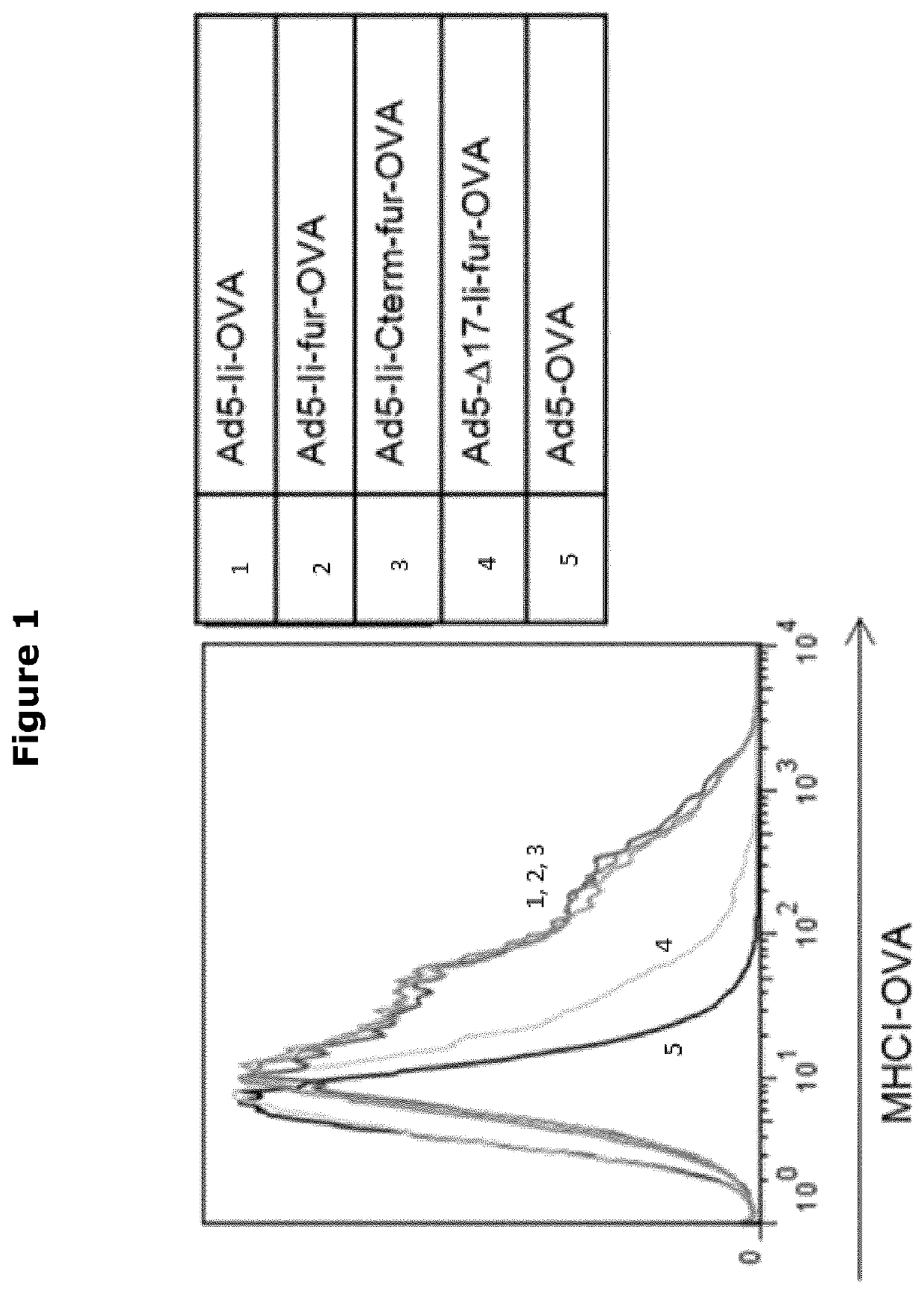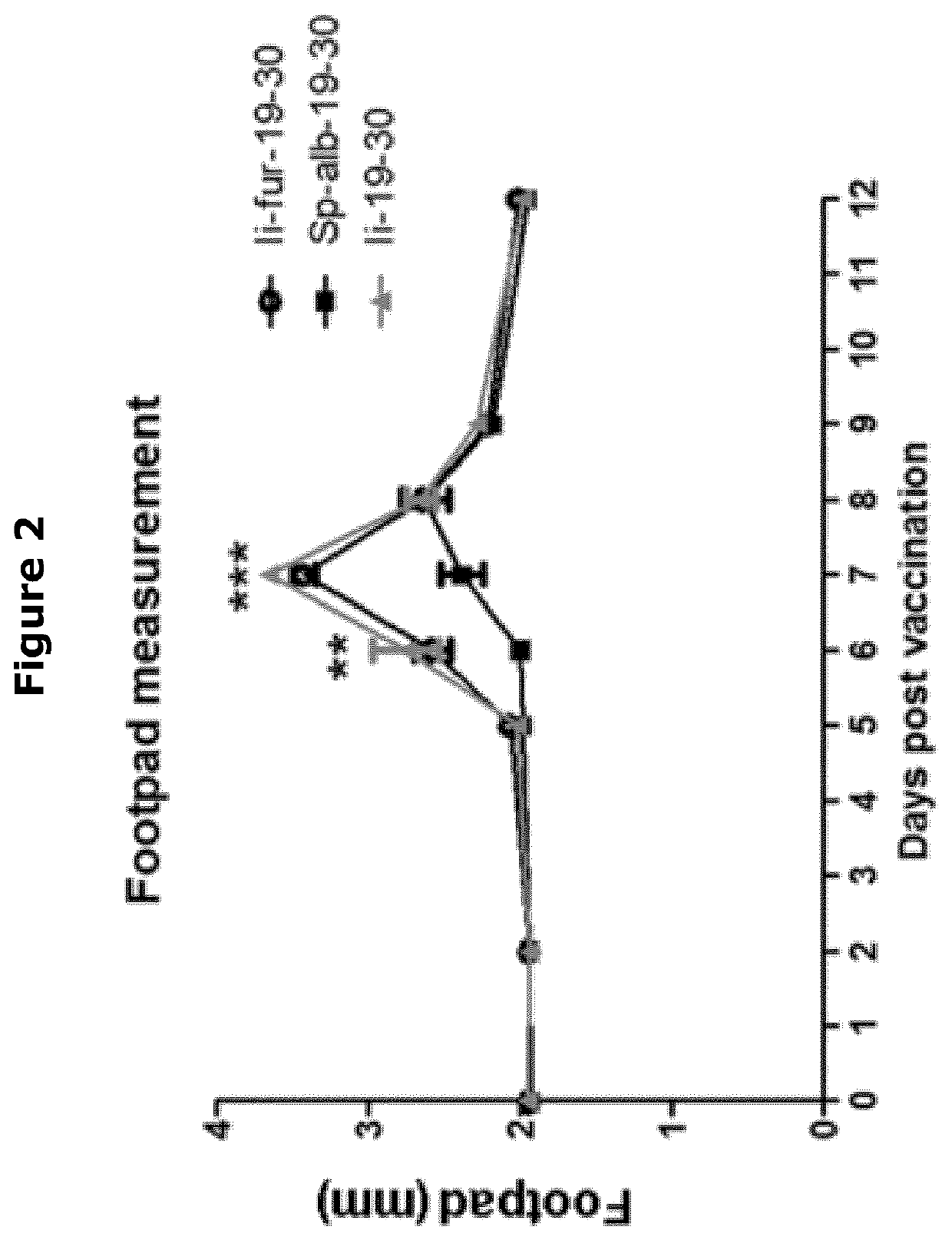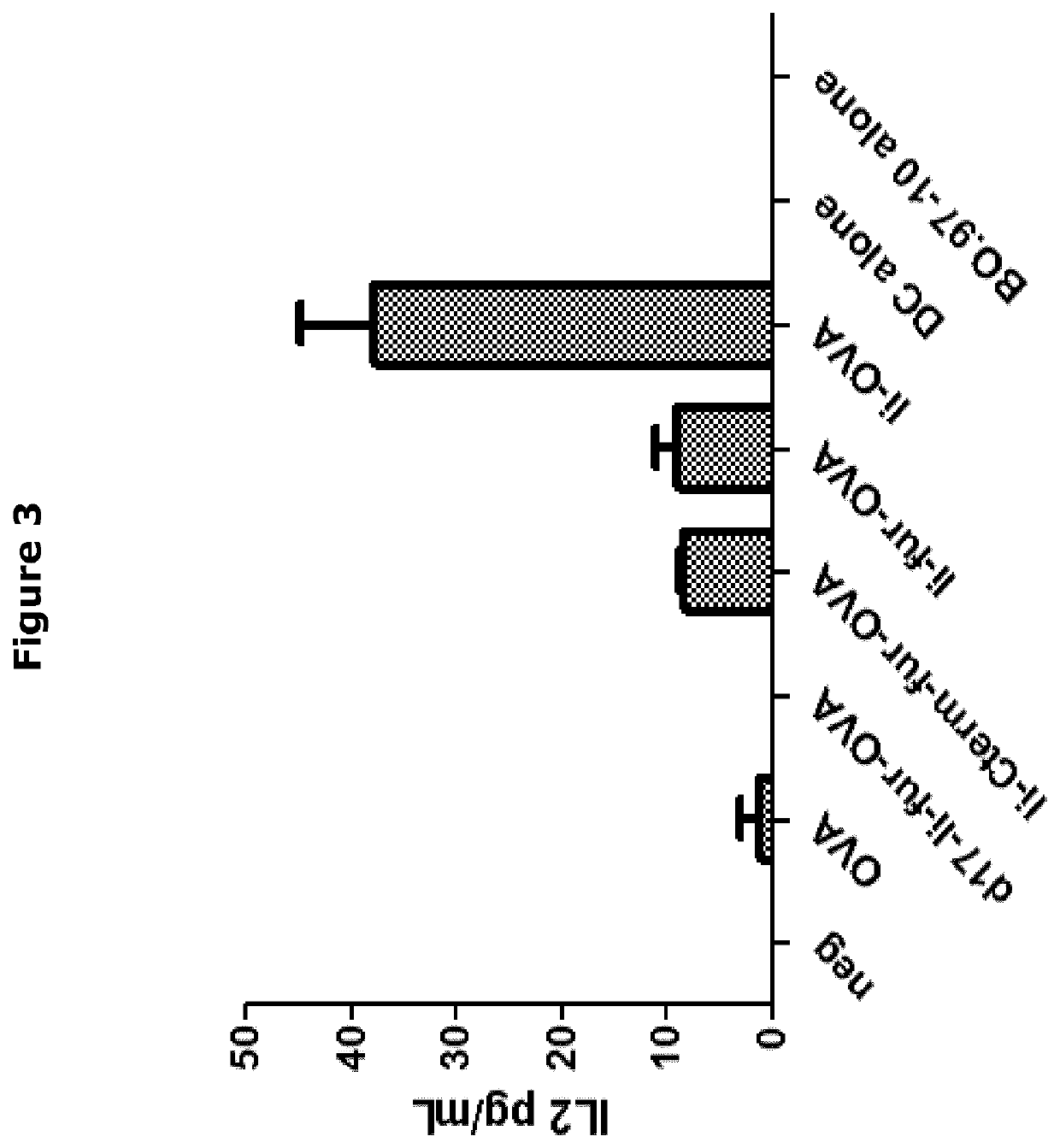Ii vaccine adjuvant
a technology of immune response and adjuvant, which is applied in the direction of antibody medical ingredients, peptide sources, carrier-bound antigen/hapten ingredients, etc., can solve the problems of vaccines running the risk of introducing diseases, no suitable vaccines are available against numerous pathogens, and threaten to overwhelm our healthcare systems, so as to improve the immune response stimulation, improve the vaccination of all animals, and increase the kinetics of the response
- Summary
- Abstract
- Description
- Claims
- Application Information
AI Technical Summary
Benefits of technology
Problems solved by technology
Method used
Image
Examples
example 1a
resentation
[0461]JAWSII cells were cultured, infected, fixed and stained as described in the materials and methods section above and were analysed by flow cytometry. The results are shown in FIG. 1 and show that the Ii-fur-Ag complex does not affect MHC-I presentation. However, the d17-Ii-fur-OVA inserted Ad5 showed a decreased presentation of OVA construct even though the endosomal sorting pathway is not normally overlapping the MHCI sorting pathway, but rather the MHCII.
example 1b
ponse
[0462]After vaccination, cells and cytokines are recruited to the site where the antigen has been introduced to trigger the immune response. By immunizing in the loose tissue behind the footpad the immune response towards vector and vaccine antigen causes swelling that can be measured by a caliper. The quantitation is interpreted as an indicator of the strength of the cellular immune response.
[0463]After vaccination the footpads of mice vaccinated with Ii and Ii-fur constructs were more swollen than in mice vaccinated with SPalb construct (FIG. 2), showing that with Ii and Ii-fur constructs the immune response was more intense than with the SPalb construct. Vaccination with Ii- and Ii-fur constructs resulted in very similar levels of swelling indicating very similar T cell responses.
example 2
Presentation
[0464]Ii-fur constructs showed increased MHCII presentation of OVA on the surface of DC like cells. However, presentation was lower than the Ii-construct, since the secretion of the Ii-fur complex, lowers the re-uptake by the endosomes thus MHCII presentation (FIG. 3).
PUM
| Property | Measurement | Unit |
|---|---|---|
| diameter | aaaaa | aaaaa |
| time | aaaaa | aaaaa |
| osmolality | aaaaa | aaaaa |
Abstract
Description
Claims
Application Information
 Login to View More
Login to View More - R&D
- Intellectual Property
- Life Sciences
- Materials
- Tech Scout
- Unparalleled Data Quality
- Higher Quality Content
- 60% Fewer Hallucinations
Browse by: Latest US Patents, China's latest patents, Technical Efficacy Thesaurus, Application Domain, Technology Topic, Popular Technical Reports.
© 2025 PatSnap. All rights reserved.Legal|Privacy policy|Modern Slavery Act Transparency Statement|Sitemap|About US| Contact US: help@patsnap.com



